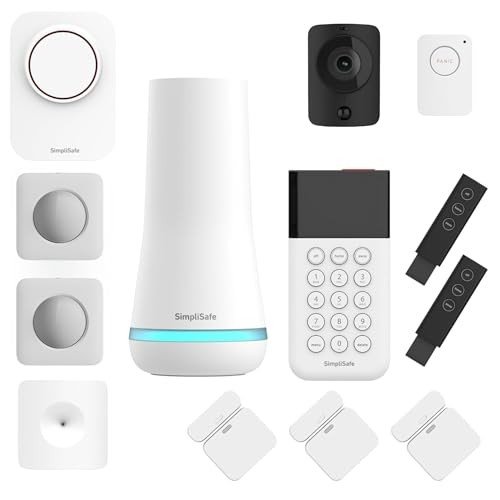Decorative Lighting in the UK: A Comprehensive Guide
In recent years, decorative lighting has taken centre phase in interior design across the UK. Homeowners and designers alike are increasingly recognising the importance of lighting not simply for functionality, however also for aesthetic appeals. This article looks into the numerous types of decorative lighting offered, the most recent trends in the UK market, and useful suggestions for picking and installing the best lighting to improve different spaces in homes.
Understanding Decorative Lighting
Decorative lighting incorporates a broad variety of lighting fixtures that serve to enhance the charm of an area while also offering illumination. This type of lighting includes a touch of style, character, and warmth to environments, producing moods and highlighting architectural functions. The crucial distinction between decorative lighting and other forms of lighting, such as job or ambient lighting, is that decorative lighting mainly aims to develop visual appeal.
Kinds Of Decorative Lighting
There are various types of decorative lighting that homeowners can select from, consisting of:
- Chandeliers: Often the focal point of dining areas or grand entrances, chandeliers are complex lighting fixtures with numerous bulbs and artistic designs.
- Pendant Lights: Suspended from the ceiling, pendant lights are offered in various designs, making them suitable for kitchens, dining locations, or living rooms.
- Wall Sconces: Mounted on walls, these fixtures can offer ambient lighting or spotlight specific areas, such as artwork or architectural information.
- Table Lamps: Used on night table, desks, or side tables, they can vary from minimalist designs to elaborate creative pieces.
- Floor Lamps: These flexible fixtures can fill empty corners while supplying both ambient and job lighting.
- Fairy Lights: String lights or fairy lights include a whimsical touch to both indoor and outdoor areas, perfect for producing an inviting environment.
- Neon Signs: An emerging trend, neon signs add a modern, urban style and are popular for home bars, recreation rooms, and individual spaces.
Present Trends in Decorative Lighting
The UK lighting market has actually seen several developing trends that reflect customer preferences and developments in technology. Some of the popular trends consist of:
- Sustainable Lighting: Eco-friendly alternatives, such as LED lighting, are increasingly favoured for their energy efficiency and lower carbon footprint.
- Smart Lighting: Integration of smart innovations enables house owners to manage their lighting through mobile phones or voice assistants, using convenience and adaptability.
- Vintage and Industrial Designs: The rustic appeal of vintage and industrial styles stays in style, as they can effortlessly blend with both modern and traditional interiors.
- Geometric Shapes: Light fixtures including bold geometric shapes contribute to a contemporary visual that appeals to modern property owners.
Choosing the Right Decorative Lighting
When selecting decorative lighting, it is essential to consider the following aspects:
- Purpose: Determine the main purpose of the lighting. Is it to produce a welcoming atmosphere, emphasize artwork, or offer practical lighting for activities?
- Design: Carry out research study to make sure that the picked lighting complements the existing decoration and shows personal design preferences.
- Size: Consider the scale of the area. Oversized fixtures can overwhelm small spaces, while petite alternatives may appear lost in bigger areas.
- Positioning: Think critically about where the fixtures will be set up, guaranteeing they are accessible and effectively brighten the designated areas.
- Energy Efficiency: Opt for energy-efficient LEDs whenever possible to save money on energy bills and add to sustainability.
Setting Up Decorative Lighting
As soon as decorative lighting choices have actually been selected, proper setup is key to achieving the preferred effect. Here are some guidelines to follow:
- Mounting Height: Ensure that chandeliers and pendant lights hang at a suitable height. They must offer sufficient light without blocking views or movement.
- Layered Lighting: Incorporate different layers, including task, ambient, and decorative lighting, to produce balance and depth within a space.
- Dimmers: Installing dimmer switches can supply flexibility in adjusting light intensity based upon activities and state of mind.
- Expert Assistance: For complex setups, it might be helpful to employ a professional electrical contractor to ensure security and compliance with regional policies.
Decorative lighting provides a fantastic opportunity for property owners in the UK to reveal their style while improving the performance of their spaces. With a range of options available, cautious consideration of factors such as style, size, and placement can lead to spectacular outcomes. As trends continue to develop, people can remain on the cutting edge of decorative lighting style.
Frequently Asked Questions (FAQs)
Q: What is the difference in between decorative lighting and ambient lighting?A: Decorative lighting is mostly focused on visual appeal, while ambient lighting provides basic lighting for an area. Q: How can I choose the right size chandelier for my dining room?A: A typical guideline is to include the measurements of the room(
in feet)and use that number as the size of the chandelier(in inches ). Affordable Lighting UK : Are LED lights appropriate for decorative lighting?A: Yes, LED lights are extensively used
due to their energy efficiency, long life-span, and capability to come in various styles. Q: Is it required to speak with an expert for installation?A: While some installations can be done DIY, it's recommended to
seek advice from an expert for intricate setups to ensure safety and
compliance. Q: What materials are popular for decorative lighting fixtures in the UK?A: Common materials consist of glass, metal, fabric, and wood, each contributing to various styles and aesthetics. By comprehending the various kinds of decorative lighting readily available, remaining informed about the current patterns, and following important standards for choice and installation, anyone can change their living spaces into gorgeous sanctuaries of light.

